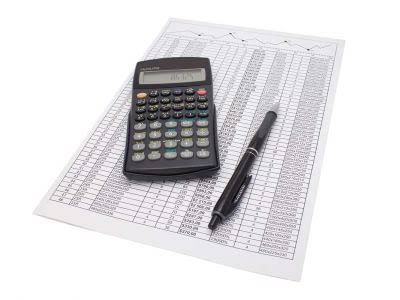
This equation states that Assets equal Liabilities Online Bookkeeping plus Equity. It provides the framework for all financial transactions recorded within an accounting system. Understanding debit and credit normal balances is one of the building blocks of an Accounting fundamental. It equips practitioners to analyze financial statements, identify fraud or discrepancies, and convey financial information to others.
What is the normal balance of income summary?
For this reason the account balance for items on the left hand side of the equation is normally a debit and the account balance for items on the right side of the equation is normally a credit. Looking normal balance of capital at assets from most to least liquid tells a company its risk. Using ratios from the balance sheet, like debt-to-equity, helps compare a company’s health to others. Sometimes, the owner of the company may withdraw the cash directly from the company for personal use without waiting for the dividend payment. Likewise, the company needs to make the owner withdrawal journal entry in order to account for this event. It’s important to note that normalizing entries should be supported by proper documentation and justification.
- This ensures financial transactions are recorded correctly within the double-entry system.
- Liabilities are what a company owes, like Accounts Payable and Notes Payable, and rise with credits.
- In the rest of this discussion, we shall use the terms debit and credit rather than left and right.
- The normal balance of an account shows if increases are recorded on the debit or credit side.
- Learn how tools like Brixx help accounting firms work smarter, serve clients better, and stay ahead in a fast-changing industry.
- This tells managers and everyone interested how liquid and stable the finances are.
- After reviewing the feedback we received from our Explanation of Debits and Credits, I decided to prepare this Additional Explanation of Debits and Credits.
Is Income Summary a permanent account?

In accounting, a change in financial position essentially signifies an increase or decrease in the balances of two or more accounts or financial statement items. The rules of debit and credit determine how a change affected by a financial transaction can be updated in a journal and then applied to accounts in ledger. A normal balance is the expectation that a particular type of account will have either a debit or a credit balance based on its classification within the chart of accounts. It is possible for an account expected to have a normal balance as a debit to actually have a credit balance, and vice versa, but these situations should be in the minority. The normal account balance for many accounts are noted in the following exhibit.
Financial and Managerial Accounting

An increase in an asset account is recorded as a debit, while a decrease is recorded as a credit. For example, when a company receives cash, its Cash account is debited to show the increase. Understanding an account’s normal balance is important for accurately recording financial transactions. This knowledge guides whether to debit or credit an account to achieve the desired effect—either increasing or decreasing its balance. Applying normal balances ensures that financial records consistently adhere to the double-entry system. Normal balance is a fundamental concept in accounting that determines the expected side or category where an account balance should appear.

Best Practices for Managing Normal Balance of Accounts
Accumulated Depreciation is a contra-asset account (deducted from an asset account). For contra-asset accounts, the rule is simply the opposite of the rule for assets. Therefore, to increase Accumulated Depreciation, you credit it. Accounts are the bookkeeping or accounting records used to sort and store a company’s transactions. Hence, these accounts are also known as general ledger accounts.
Understanding the normal balance of accounts
- In this article, we explored the definition of normal balance and its significance in accounting.
- If you’re crediting a liability, equity, or revenue account, you’re also increasing its balance.
- Liquidity management necessitates a nuanced understanding of how transactions impact the balance sheet and the cash flow statement.
- Liabilities include amounts owed to third parties, including loans, accounts payable, and other costs incurred.
- If an account’s balance appears on the “wrong” side—for instance, a cash account showing a credit balance instead of a debit balance—it immediately signals an error in the recording process.
- Debits and credits represent the two fundamental sides of every accounting transaction, serving as mechanisms to increase or decrease account balances.
This rule is consistent across account categories and directly reflects their relationship to the accounting equation. Knowing an account’s normal balance is essential for accurate recording and maintaining financial records. In contrast, liabilities, which are obligations owed to others, normally carry a credit balance. For instance, Accounts Payable, representing money owed to suppliers, increases with a credit entry. Equity accounts, reflecting the owners’ stake in the business, also typically have a credit balance. This includes owner’s capital or retained earnings, which increase with credits.

BAR CPA Practice Questions: Proprietary Funds Statement of Revenues, Expenses and Fund Balances
- Understanding the normal balance of accounts is essential for recording transactions and preparing financial statements.
- Consistency in the presentation and classification of accounts enhances the comparability of financial statements across different periods and entities.
- This normal balance side of accounts quiz is one of many of our online quizzes which are used to test your knowledge of double entry bookkeeping, discover another at the links below.
- This means that increases to asset accounts, such as cash or equipment, are recorded as debits, while decreases are recorded as credits.
- This knowledge is instrumental in the initial step of recording financial transactions, specifically when preparing journal entries.
A debit records an entry on the left side of an account, while a credit records an entry on the right side. These entries directly impact the accounting equation, ensuring that for every https://wattravel.com/free-payroll-calculators-and-business-tools/ financial transaction, the total debits always equal the total credits. The normal balance is the expected balance each account type maintains, which is the side that increases. As assets and expenses increase on the debit side, their normal balance is a debit. Dividends paid to shareholders also have a normal balance that is a debit entry.

In other words, the temporary accounts are the accounts used for recording and storing a company’s revenues, expenses, gains, and losses for the current accounting year. From the table above it can be seen that assets, expenses, and dividends normally have a debit balance, whereas liabilities, capital, and revenue normally have a credit balance. In contrast, liability and equity accounts have a credit balance. Liabilities are what a company owes, like Accounts Payable and Notes Payable, and rise with credits. Equity accounts, like Common Stock, show ownership investment and earnings.
